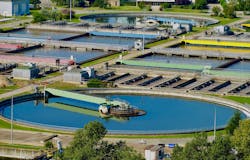Together staff created Standard Operating Procedures (SOPs), an instructional video for IUs, and a video for staff training. “We put together a demo video and presented our SOP’s to our Sr. Program Manager and then the Texas Commission on Environmental Quality (TCEQ) and received approval to proceed with virtual inspections,” said Fielding.
During crises like the one we’re enduring now, the EPA has to focus its resources largely on preventing situations that may create an acute risk or imminent threat to public health. Tasks that do not fall into that category are ripe for automation or improved efficiency by leveraging technology. As a result, several municipalities are now conducting inspections remotely using virtual meetings to ensure permit requirements continue to be met. While in the meeting, Inspectors can pull up data for the inspection from their cloud-based database such as Linko, collaborate on documents using a screen share feature and document outcomes, and any next steps all from the safety of their home.
“Inspections are now faster because we request all paperwork to be provided 48 hours before the inspection. This way, we aren’t searching for paperwork during the inspection and the Inspector just asks questions based on what has already been reviewed. The time to perform an inspection has gone from a day or more to around 1.5 hours to ensure permit requirements are being met,” said Fielding.
There are of course some limitations. “Certain Industries have security policies in place that do not allow a virtual inspection. There is also a requirement from the EPA to keep documentation on-site for at least 3 years, so we ask them to demonstrate that by showing us various documents during the inspection, of course we are counting on them to do their part without being onsite” said Fielding.
“Since we generally conduct two inspections per year for an IU, going forward, I think it would be realistic that we do one inspection virtually and the other in person for Industries that will qualify. This will be a significant reduction in man-hours for the pretreatment team,” concluded Fielding.
In truth, cloud-based software solutions have been providing resiliency to regulatory programs for years, but it has taken the pandemic with shrinking human resources to show its powerful capacity to keep things on track. People can continue to perform the majority of their tasks from anywhere at any time. Their work is accessible by peers, agencies, and management, not only on the day but historically as far back as the software was started, and as far forward as the person has planned out their workload.
Sarah Griffith, Laboratory and Pretreatment Manager at Sanitation District No.1 said, “Since the start of the pandemic, our department has been using Microsoft Teams. This platform provides a collaborative and productive format so we can easily share and discuss our Linko compliance data during a meeting rather than having to set up a computer in the conference room. Inspectors can join meetings from wherever they are, which means fewer meetings are being missed.”
Those that have embraced technology with web-based tools including remote monitoring and/or data collection have been far less affected than those tied to internal networks and paper reporting. Resiliency plans are being tested and those programs driven by innovation and technology are using current circumstances to adapt to a changing world in order to maintain compliance both now and in the future.
About the Author: Rich Prinster is strategic development manager for Aquatic Informatics.




